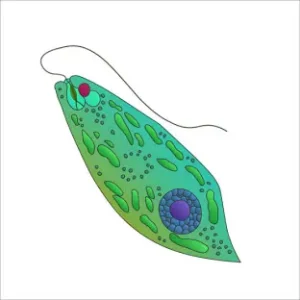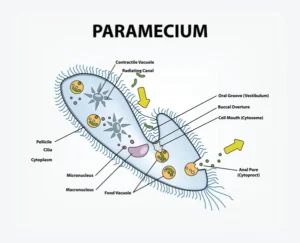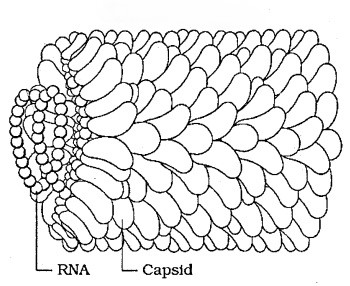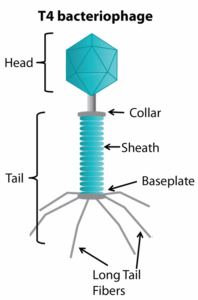1st PUC Biology Question and Answer Karnataka State Board Syllabus
1st PUC Biology Chapter 2
Biological Classification
Scroll Down to Download Biological Classification PDF
Biological Classification Question and Answer:
Question 1.
Discuss how classification systems have undergone several changes over a while.
Answer:
The classification of organisms has evolved significantly over time. Early attempts, like those of Aristotle, were based on simple characteristics, such as classifying plants into trees, herbs, and shrubs, and animals based on the presence of red blood. Later, Linnaeus introduced a two-kingdom system, dividing life into Plantae and Animalia. However, this system did not account for differences between eukaryotes and prokaryotes, or unicellular and multicellular organisms.
With advancements in science, it became clear that additional factors like cell structure, nutrition, and evolutionary relationships needed consideration. To address this, R.H. Whittaker proposed a five-kingdom system, which includes:
- Monera
- Protista
- Fungi
- Plantae
- Animalia
Question 2.
State two economically Important uses of:
- Heterotrophic bacteria
- Archaebacteria
Answer:
(a) Heterotrophic Bacteria:
- Used in the production of curd from milk.
- Aid in nitrogen fixation in the roots of leguminous plants.
(b) Archaebacteria:
- Methanogens, found in the guts of ruminants like cows and buffaloes, produce methane from animal waste.
- Archaebacteria thrive in extreme environments, such as salty areas and hot springs, providing insights into the early evolution of life on Earth.
Question 3.
What is the nature of cell walls in diatoms?
Answer:
The cell walls of diatoms are made up of two thin overlapping shells that fit together like a soap box. These walls are embedded with silica, making them indestructible. As a result, diatoms leave behind large deposits of their cell walls in their habitats.
Question 4.
Find out what do the terms ‘algal bloom’ and ‘red tides’ signify.
Answer:
Algal Bloom refers to the rapid multiplication of algae, leading to the formation of large colonies in water. Dinoflagellates, a type of algae, come in various colours due to different pigments. When red-pigmented dinoflagellates multiply rapidly, they give the sea a reddish appearance, a phenomenon known as a Red Tide.
Question 5.
How are viroids different from viruses?
Answer:
Viroids consist of free RNA without a protein coat, while viruses have RNA or DNA enclosed in a protective protein coat.
Question 6.
Describe briefly the four major groups of Protozoa.
Answer:
(a) Amoeboid Protozoa:
These organisms inhabit fresh water, seawater, or moist soil. They move and capture prey using pseudopodia (false feet), as seen in Amoeba. Marine forms may have silica shells, and some, like Entamoeba, are parasitic.
(b) Flagellated Protozoa:
Members of this group can be free-living or parasitic, and they move using flagella. Parasitic forms, such as Trypanosoma, can cause diseases like sleeping sickness.
(c) Ciliated Protozoa:
These are aquatic and move actively using thousands of cilia. They have a gullet that opens to the cell surface, and the coordinated movement of cilia directs food-laden water into the gullet. Example: Paramecium.
(d) Sporozoans:
This group includes organisms with an infectious spore-like stage in their life cycle. The most well-known example is Plasmodium, the cause of malaria, which significantly affects human populations.
Question 7.
Plants are autotrophic. Can you think of some partially heterotrophic plants?
Answer:
While most plants are autotrophic, some are partially heterotrophic. Examples include insectivorous plants like Bladderwort and Venus flytrap, which trap and digest insects, and Cuscuta, a parasitic plant.
Question 8.
What do the terms phycobiont and mycobiont signify?
Answer:
Lichens are symbiotic associations between algae and fungi. The algal component, called the phycobiont, is autotrophic, while the fungal component, known as the mycobiont, is heterotrophic. The algae produce food for the fungi, while the fungi provide shelter and absorb water and mineral nutrients for the algae.
Question 9.
What are the characteristic features of Euglenoids?
Answer:
- They are freshwater organisms commonly found in stagnant water.
- Instead of a cell wall, they possess a flexible protein-rich layer called a pellicle.
- Euglenoids have two flagella: one short and one long.
- They are photosynthetic in the presence of sunlight but act as heterotrophs by preying on small organisms in the absence of sunlight.
- Their pigments are similar to those found in higher plants.
- Example: Euglena.

1st PUC Biology Chapter 2 Biological Classification
Question 10.
Give a brief account of viruses concerning their structure and nature of genetic material. Also, name four common viral diseases.
Answer:
Viruses: Structure and Nature of Genetic Material
Viruses consist of a protein capsule that encases their genetic material. They are non-cellular organisms characterized by an inert crystalline structure outside living cells. Upon infecting a host cell, viruses hijack the host’s cellular machinery to replicate themselves, often resulting in the death of the host cell.
In terms of genetic material, viruses that infect plants typically have single-stranded RNA, while those that infect animals can possess either single or double-stranded DNA. Bacteriophages generally contain double-stranded DNA, whereas the Tobacco Mosaic Virus (TMV) has single-stranded RNA.
Four Common Viral Diseases:
- AIDS
- Mumps
- Smallpox
- Herpes
Question 11.
Give a comparative account of the classes of Kingdom Fungi under the following:
(i) Mode of nutrition
(ii) Mode of reproduction
Answer:
| Mode of Nutrition | Mode of Reproduction | |
|---|---|---|
| Chytridiomycetes | Mostly saprophytic, some are parasitic; they absorb nutrients from their environment, including decaying organic matter. | Asexual reproduction occurs via motile zoospores; sexual reproduction involves gametes that fuse to form a zygote. |
| Zygomycetes | Primarily saprophytic, decomposing organic material, with some forming mutualistic relationships with plants (e.g., mycorrhizae). | Asexual reproduction occurs through sporangiospores; sexual reproduction occurs through the formation of zygospores. |
| Ascomycetes | Mostly saprophytic, some are parasitic; they absorb nutrients from various organic substrates, including living hosts. | Asexual reproduction occurs via conidia; sexual reproduction involves the formation of ascospores within ascocarps. |
| Basidiomycetes | Primarily saprophytic, decomposing wood and other plant materials; some are parasitic on plants and animals. | Asexual reproduction occurs via fragmentation; sexual reproduction involves the formation of basidiospores on basidia. |
| Glomeromycetes | Mutualistic symbionts with plant roots (arbuscular mycorrhizae); they help plants absorb water and nutrients. | Asexual reproduction through asexual spores; sexual reproduction is not well-studied, as they primarily propagate asexually. |
Question 12.
Organise a discussion in your class on the topic of viruses living or nonliving.
Answer:
Living Characteristics:
- Viruses replicate only inside a host cell.
- They can hijack the host cell’s machinery to reproduce.
- Viruses contain genetic material, either DNA or RNA, similar to living organisms.
Non-living Characteristics:
- Outside a host, viruses remain inert and inactive.
- They lack a cellular structure.
- Viruses can be crystallized, a property of non-living entities.


